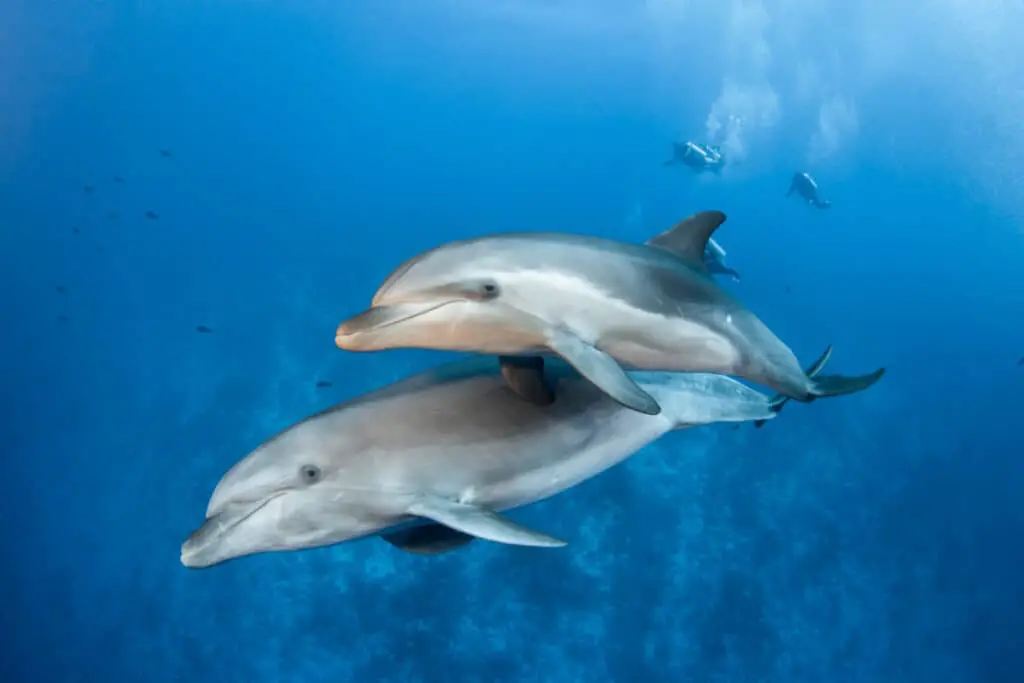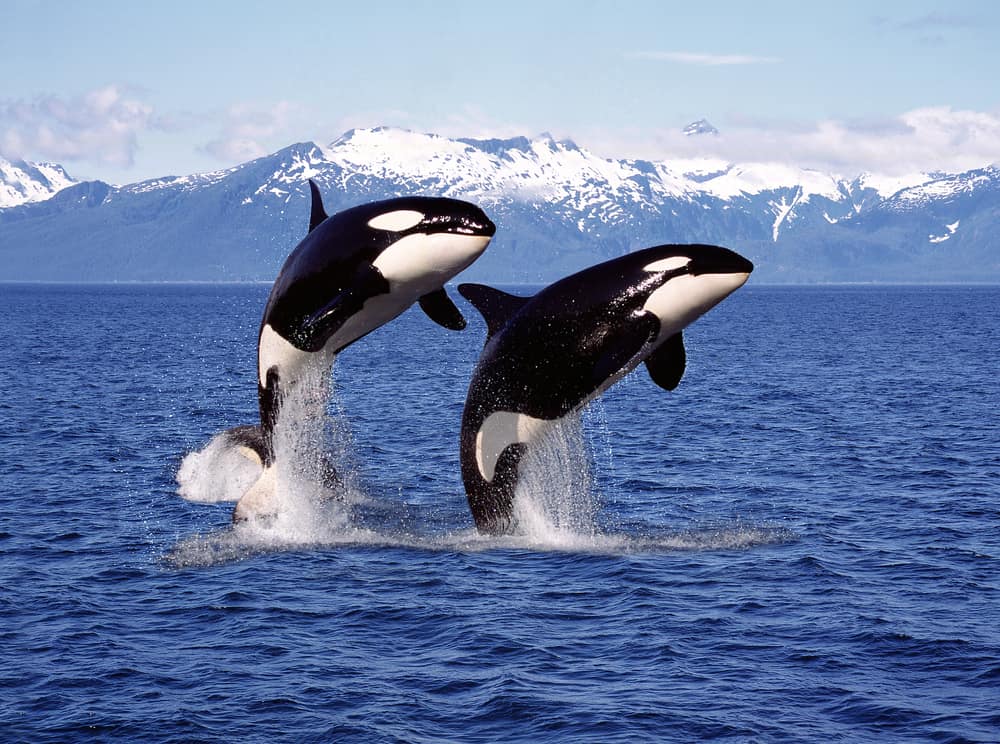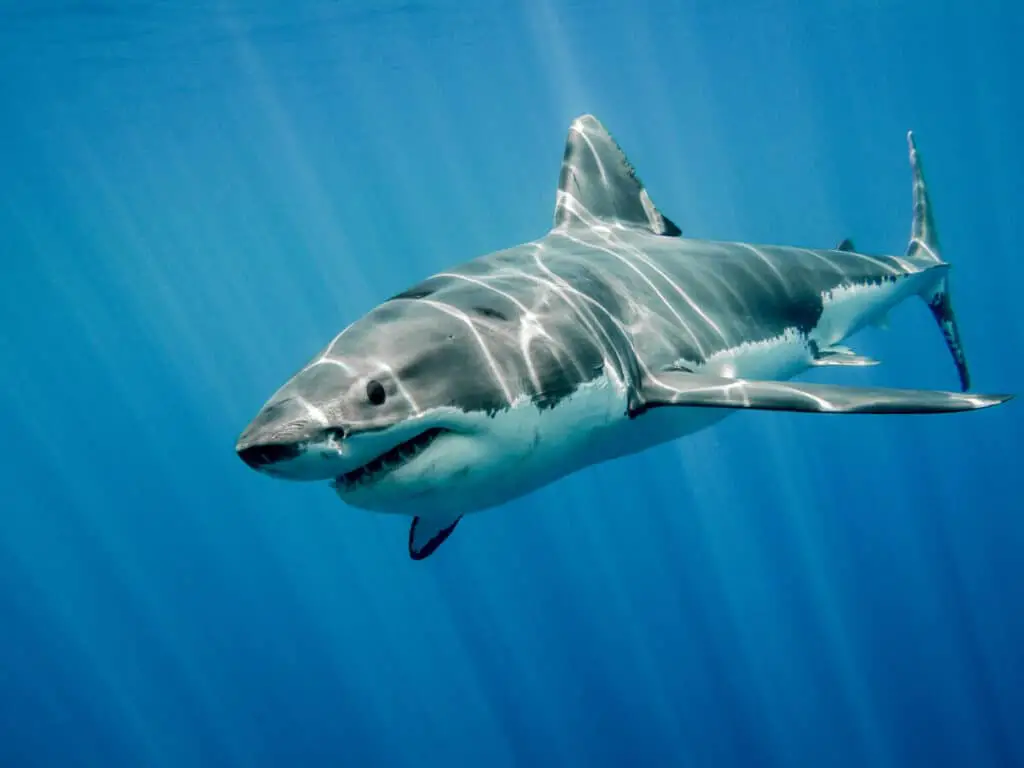Bottlenose dolphins are one of the most widely recognized marine mammals, known for their playful personalities and intelligence. However, despite their friendly reputation, these animals face numerous threats from predators in their natural habitat.
While they possess remarkable swimming and communication abilities that allow them to avoid danger, it is important to understand what predators pose a threat to bottlenose dolphins. Predators play an essential role in maintaining ecological balance by keeping prey populations in check and removing sick or weak individuals.
In the case of bottlenose dolphins, several species have been identified as natural predators that can impact dolphin populations through predation on calves or juveniles. This article will explore the various predators of bottlenose dolphins and examine how these interactions shape the behavior and survival strategies of this iconic marine mammal species.

Importance Of Predator-Prey Relationships In Ecosystems
Ecological balance is maintained by the interactions between different organisms within an ecosystem. One of the most crucial relationships in any food web is that between predators and their prey.
Predators are essential for regulating population sizes, preventing overgrazing or overconsumption of resources by herbivores, and ensuring a healthy distribution of biomass throughout the system.
Food web dynamics are complex, with each organism occupying a specific niche. The loss or addition of a predator can have cascading effects on other populations in the food chain.
For example, if there were no predators to control the number of herbivores such as fish, they would consume all available resources until they became depleted. This could lead to starvation and death not only among themselves but also among primary producers that rely on these resources for survival.
Therefore, understanding predator-prey relationships is vital for managing ecosystems and maintaining ecological stability.
Natural Predators Of Bottlenose Dolphins
Bottlenose dolphins are one of the most beloved marine mammals in the world, capturing our hearts with their playful personalities and intelligent behaviors. However, these creatures face constant danger from natural predators that lurk beneath the ocean’s surface.
The thought of these magnificent animals being hunted down by other sea creatures can evoke a range of emotions, from sadness to anger. Despite their seemingly gentle nature, bottlenose dolphins have several natural predators that pose a significant threat to their survival.
Sharks such as great whites and tiger sharks are known to prey on dolphins using stealthy hunting behavior, waiting for an opportunity to strike when their target is distracted or weak. Killer whales are also formidable hunters capable of taking down larger marine mammals like dolphins with ease.
To defend themselves against these predators, bottlenose dolphins use various defense mechanisms such as swimming in tight groups, vocalizing loudly to alert others of potential danger, and even jumping out of the water in an attempt to confuse attackers.
Natural Predators of Bottlenose Dolphins:
- Great white sharks
- Tiger sharks
- Killer whales
Through their impressive hunting skills and adaptability, these predators continue to pose threats to bottlenose dolphin populations worldwide. Despite this ongoing challenge, scientists remain hopeful that continued research and conservation efforts will help protect these beloved marine mammals for future generations to enjoy without fear of predation or harm.
Diving into the Sensory World of Bottlenose Dolphins: How Good Are Their Senses?

Killer Whales
Killer Whales, also known as Orcas, are one of the primary predators of bottlenose dolphins. These highly intelligent and social animals can be found in all oceans around the world and have been observed preying on a variety of marine mammals, including sea lions, seals, and even larger species like whales. While their diet may vary depending on location and availability of prey, they have been known to target dolphins in areas where these creatures are abundant.
The interaction between killer whales and bottlenose dolphins is an area of ongoing research. Some studies suggest that orcas may actively hunt for dolphins while others propose that it could be incidental predation during fishing activities. Nevertheless, observations show that orcas seem to exhibit complex social behavior when interacting with other marine mammals such as cooperative hunting techniques and vocalizations unique to each pod. Interactions with humans such as whale watching tours and captivity facilities provide insight into the fascinating lives of these apex predators while highlighting the importance of protecting both them and their natural habitats.

Sharks
Sharks are one of the most well-known predators of bottlenose dolphins. These apex predators have been observed to chase and attack dolphins in a thrilling display of predator-prey interaction.
The occurrence of such interactions is not new, as sharks and dolphins have shared an evolutionary history that spans millions of years. The evolution of shark-dolphin interactions has resulted in several adaptations on both sides.
Dolphins, for instance, have developed speed and agility to evade their attackers, while sharks have evolved keen senses and hunting strategies to successfully capture their prey. Despite these adaptations, incidences of shark attacks on dolphins continue to occur in various parts of the world.
As scientists continue to study these fascinating creatures, we may come closer to unlocking the secrets behind this intense predator-prey dynamic. It remains crucial that we strive towards understanding more about these animals so that we can better protect them from potential threats like overfishing or habitat destruction which could put them at risk for extinction.
Human Impacts On Dolphin Populations
While bottlenose dolphins face natural predators in their marine environment, human impacts have greatly affected their populations.
Overfishing consequences have led to a decline in the food sources of these mammals, affecting their ability to survive and reproduce. Dolphins rely on fish as their primary source of sustenance, but overfishing has reduced the availability of prey for them. This scarcity also forces dolphins to compete with other marine animals, leading to further depletion of resources.
Moreover, pollution effects pose another threat to dolphin populations. Chemicals such as pesticides and industrial waste products contaminate waters where these creatures reside. These toxins can accumulate within the bodies of dolphins, causing health problems that may be fatal.
Polluted waters not only affect the physical health of dolphins but also disrupt their feeding habits and social behavior patterns.
As apex predators at sea, their disappearance from ecosystems would cause an imbalance in the food chains they belong to and could lead to cascading ecological consequences across multiple trophic levels.
Conservation Efforts For Bottlenose Dolphins
Human impacts on dolphin populations have been significant and detrimental in many ways. One of the most severe consequences is the disturbance caused by human activities, such as fishing, shipping, construction, and tourism.
For example, bottlenose dolphins are highly sensitive to noise pollution generated by boats and sonar devices, which can disrupt their communication, navigation, feeding behavior, and social interactions. Moreover, overfishing and bycatch have depleted the prey base of dolphins, leading to malnourishment and starvation.
To address these issues, various conservation efforts for bottlenose dolphins have been initiated worldwide. One notable approach is promoting dolphin-friendly tourism that emphasizes responsible practices and ethical considerations towards marine wildlife. This includes avoiding close encounters with wild dolphins or feeding them manually since it may alter their natural behaviors and health conditions.
Additionally, government regulations play a crucial role in protecting dolphins from harmful threats through enforcing laws against hunting, poaching, habitat destruction or limiting access to critical areas.
Dolphin friendly tour operators should follow specific guidelines set forth by local authorities. The public needs education surrounding appropriate interaction with marine life. Regulations need strict enforcement to ensure compliance with rules designed to protect dolphin habitats.
Overall, dolphin conservation requires concerted efforts from multiple stakeholders including governments and communities to effectively manage human impact while balancing economic growth. Therefore, it’s important for all parties involved in promoting sustainable development strategies that prioritize environmental protection alongside economic opportunities.
Conclusion
Predator-prey relationships are essential to the balance of ecosystems, and bottlenose dolphins are no exception.
These intelligent mammals face a variety of natural predators such as killer whales, sharks, and large fish like tarpon and barracuda.
However, human activity also poses a significant threat to dolphin populations through hunting, fishing, pollution, and habitat destruction.
Conservation efforts have been implemented worldwide in an attempt to protect these fascinating creatures from further harm.
Strategies include the establishment of marine protected areas, education campaigns for responsible boating practices, regulations on commercial fishing methods that may harm dolphins unintentionally, and reducing plastic waste in oceans.
By recognizing the importance of preserving predator-prey dynamics within our planet’s delicate ecosystem network – we can effectively safeguard species like bottlenose dolphins for future generations.

